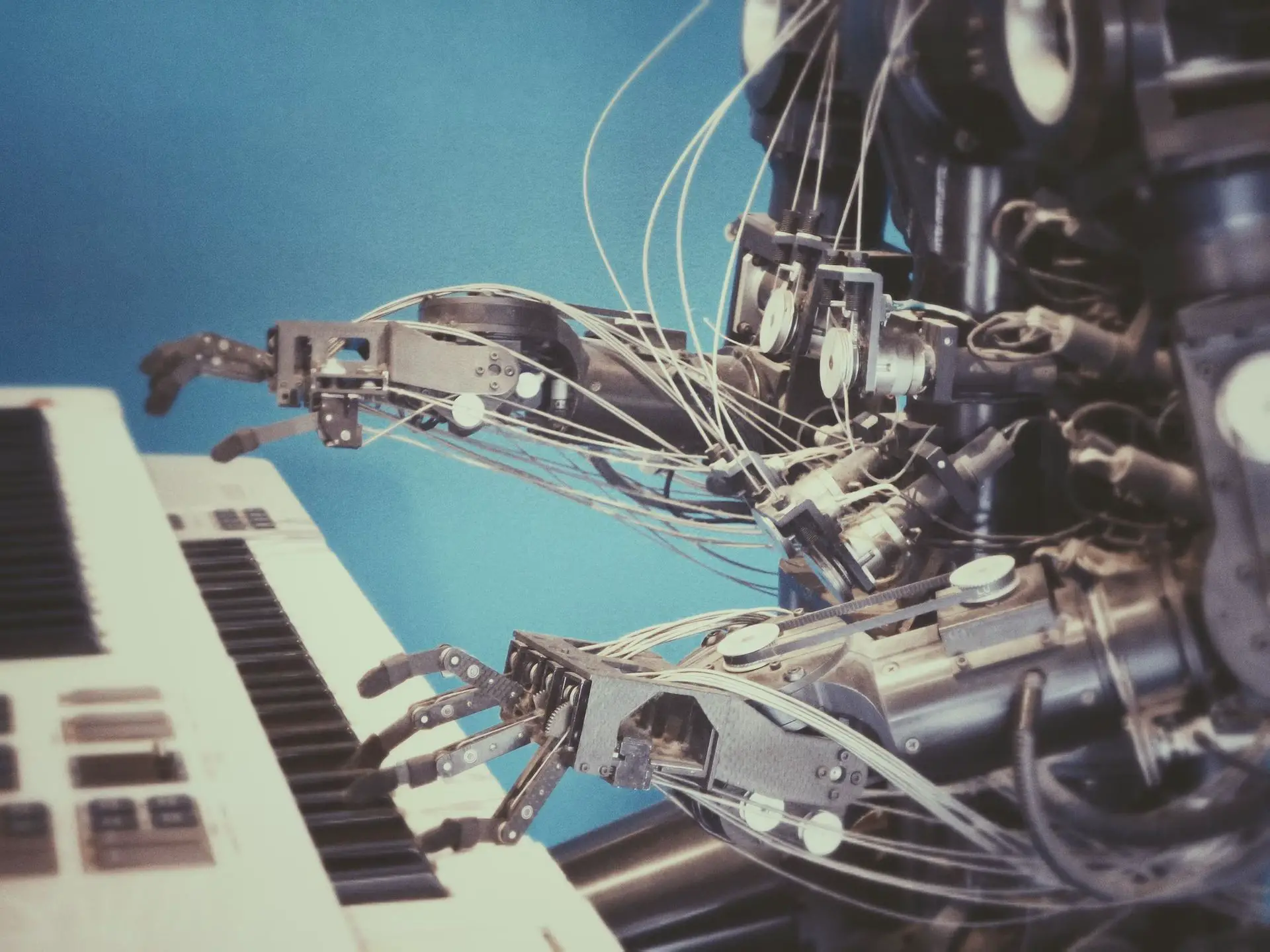Robotic process automation vs machine learning is a common debate in the world of automation and artificial intelligence. Both have the potential to transform the way organizations operate, enabling them to streamline processes, improve efficiency, and drive business outcomes. However, while RPA and ML share some similarities, they differ in functionality, purpose, and the level of human intervention required. In this article, we will explore the similarities and differences between RPA and ML and examine their potential use cases in various industries.
Definition and purpose of RPA
Robotic process automation refers to the use of software robots to automate rule-based business processes. RPA tools can be programmed to interact with various systems, such as web applications, databases, and desktop applications. The purpose of RPA is to automate mundane, repetitive tasks and to eliminate the need for manual intervention in these tasks. By automating routine tasks, RPA helps organizations to improve operational efficiency, reduce costs, and free up human resources to focus on more complex tasks.
Common use cases and industries
RPA is a technology that can be applied across industries and functions. Some of the common use cases and industries that have adopted RPA include:
- Finance and accounting: RPA can be used for tasks such as order processing, invoice processing, and payroll management.
- Human resources: RPA can automate tasks such as employee onboarding, offboarding, and data entry.
- Customer service: RPA can be used to automate customer support tasks such as responding to inquiries, handling complaints, and processing refunds.
- Healthcare: RPA is being used to automate tasks such as claims processing, appointment scheduling, and medical record management.
- Insurance: RPA is being used to automate tasks such as claims processing, underwriting, and policy administration.
- Logistics and manufacturing: RPA can be used for tasks such as inventory management, order processing, and production scheduling.
Benefits and limitations of RPA
Some of the benefits of RPA include:
- Improved operational efficiency: RPA can automate routine tasks, reducing the time and effort required to complete them.
- Cost savings: By automating tasks, organizations can reduce the need for manual labor, leading to cost savings.
- Reduced errors: RPA can reduce the risk of errors and improve the accuracy of data entry and processing.
- Improved compliance: RPA can be used to ensure that processes are carried out consistently and in compliance with regulations.
However, RPA also has some limitations, such as:
- Limited cognitive abilities: RPA can only perform tasks that have well-defined rules and procedures.
- Limited scalability: RPA may not be able to handle large volumes of data or complex processes.
- Inability to learn: RPA cannot learn from past experiences or adapt to new situations without human intervention.

Is RPA artificial intelligence?
RPA is often considered a form of artificial intelligence, but it is not a complete AI solution. RPA relies on pre-programmed rules and is only able to automate routine, repetitive tasks.
AI, on the other hand, can learn from data and adapt to new situations without human intervention. While RPA is a useful tool for automating routine tasks, AI is better suited for more complex tasks that require decision-making and problem-solving abilities.
The role of machine learning in process automation
Machine learning is a subset of AI that enables machines to learn from data and improve their performance over time. While RPA is a useful tool for automating routine tasks, ML can be used to automate more complex tasks that require decision-making and problem-solving abilities. Some of the ways in which ML can be used in process automation include the following:
- Predictive analytics: ML algorithms can be used to predict future outcomes based on historical data, enabling organizations to make better decisions.
- Natural language processing (NLP): ML algorithms can be used to understand and interpret human language, enabling organizations to automate tasks such as customer support and document processing.
- Image and speech recognition: ML algorithms can be used to recognize images and speech, enabling organizations to automate tasks such as quality control and call center operations.
What is machine learning (ML)?
Machine learning is a subset of artificial intelligence that involves creating algorithms and models that enable computer systems to learn from data and make predictions or decisions without being explicitly programmed to do so. Here are some key points to understand:
Definition and purpose of ML
The primary purpose of ML is to automate decision-making processes and improve accuracy by using algorithms that continually learn and improve from data.
More specifically:
- ML is a technique that uses algorithms to learn from data and make predictions or decisions.
- It enables machines to learn from experience and improve over time.
- The goal is to create algorithms that can make predictions or decisions based on input data, without being explicitly programmed to do so.
Types of machine learning algorithms
There are three main types of machine learning algorithms:
- Supervised learning: This involves using labeled data to train the algorithm to recognize patterns and make predictions based on new, unlabeled data.
- Unsupervised learning: This involves using unlabeled data to identify patterns and relationships within the data.
- Reinforcement learning: This involves using a reward-based system to train the algorithm to make decisions based on maximizing rewards.
Common use cases and industries
Machine learning has various applications across industries, such as:
- Healthcare: Machine learning can help analyze medical data, predict the likelihood of disease, and improve patient outcomes.
- Finance: Machine learning can help identify fraudulent transactions and forecast market trends.
- Retail: Machine learning can help analyze customer data to identify buying patterns and personalize recommendations.
- Manufacturing: Machine learning can help optimize production processes and predict equipment failures.

Benefits and limitations of ML
Machine learning has several benefits and limitations.
Benefits:
- Increased accuracy and efficiency: Machine learning can analyze vast amounts of data to make more accurate predictions and decisions, often faster than humans can.
- Improved decision-making: Machine learning can help automate decision-making processes and reduce errors.
- Personalization: Machine learning can help personalize recommendations and experiences for individual users.
- Scalability: Machine learning algorithms can be easily scaled to process large amounts of data.
Limitations:
- Bias and interpretability: Machine learning algorithms may reflect biases present in the data used to train them, and it may be challenging to interpret how they arrived at their decisions.
- Data quality and quantity: Machine learning algorithms require high-quality, labeled data to be effective, and their accuracy may be limited by the amount of data available.
- Technical expertise: Machine learning requires specialized technical expertise to develop and maintain algorithms and models.
Machine learning is a powerful tool that can help automate decision-making processes and improve accuracy across a wide range of industries. However, it is essential to understand its benefits and limitations to ensure that it is used effectively and responsibly.
Robotic process automation vs machine learning
Robotic process automation and machine learning are two buzzwords in the world of technology today. Both technologies are used to automate various processes and improve operational efficiency, but they differ in functionality and purpose.
- RPA is a rule-based software that can mimic human actions, automate repetitive tasks, and streamline workflows. It works on structured data and follows a predefined set of rules to perform tasks.
- In contrast, ML is a subset of artificial intelligence that uses algorithms to identify patterns in data and make predictions. It can learn from experience and improve over time without being explicitly programmed.
Difference in functionality and purpose
RPA and ML have different functionalities and purposes. RPA is best suited for tasks that are repetitive, rule-based, and require a high degree of accuracy. Some examples of tasks that can be automated with RPA include data entry, invoice processing, and report generation. On the other hand, ML is used to solve complex problems that involve large amounts of data and require predictive analysis. Some examples of tasks that can be performed with ML include fraud detection, sentiment analysis, and customer behavior prediction.
Comparison of RPA and ML in terms of technology
The technology used in RPA and ML is also different. RPA uses a graphical user interface (GUI) to interact with applications and websites, while ML uses algorithms and statistical models to analyze data. RPA can be easily integrated with legacy systems, and the implementation process is relatively straightforward. On the other hand, ML requires a significant amount of data preparation and model training before it can be deployed.

Scalability and adaptability differences
RPA and ML also differ in terms of scalability and adaptability. RPA is highly scalable and can be easily scaled up or down based on the organization’s needs. It can also adapt to changes in the underlying systems and processes without significant modifications. In contrast, ML models can be challenging to scale as they require a large amount of computing power and specialized hardware. Additionally, ML models are sensitive to changes in the underlying data, and any modifications may require retraining the model from scratch.
Level of human intervention required
Another significant difference between RPA and ML is the level of human intervention required. RPA is designed to automate repetitive tasks, and it can work independently without any human intervention. However, it may require some level of human oversight to ensure the accuracy and quality of the output. On the other hand, ML requires human intervention in the form of data preparation, model selection, and tuning. Additionally, ML models may require human oversight to ensure that the predictions are accurate and unbiased.
RPA and ML are two different technologies that serve different purposes. RPA is best suited for automating repetitive tasks, while ML is used for predictive analysis and solving complex problems. The technology used in RPA and ML is also different, and they differ in terms of scalability, adaptability, and the level of human intervention required.
Exploring the mind in the machine
Applications of RPA and ML in data science and AI
Robotic process automation and machine learning have a significant impact on the field of data science and artificial intelligence. Both technologies are used to automate various processes, improve operational efficiency, and enhance the quality of data-driven decision-making.
- RPA can be used to automate data entry and data management processes, reducing the risk of errors and improving data quality. It can also be used to automate repetitive tasks in data preparation, such as cleaning and formatting data.
- ML can be used for predictive analytics and insights generation, enabling organizations to make data-driven decisions. It can be used to identify patterns and anomalies in large datasets, classify data into categories, and make predictions based on historical data.
How can RPA improve data quality and streamline data management processes?
RPA can improve data quality and streamline data management processes by automating repetitive tasks and reducing the risk of errors. Some of the ways in which RPA can be used to improve data quality include:
- Automating data entry: RPA can automate data entry tasks, reducing the risk of errors and improving data accuracy.
- Streamlining data management: RPA can streamline data management processes by automating repetitive tasks such as data cleaning, formatting, and integration.
- Enhancing data security: RPA can be used to automate data security processes, such as data encryption and access control, reducing the risk of data breaches and unauthorized access.
Leveraging ML for predictive analytics and insights generation
ML can be leveraged for predictive analytics and insights generation, enabling organizations to make data-driven decisions. Some of the ways in which ML can be used for predictive analytics and insights generation include:
- Identifying patterns and anomalies: ML algorithms can be used to identify patterns and anomalies in large datasets, enabling organizations to detect trends and make predictions.
- Classifying data: ML can be used to classify data into categories, enabling organizations to analyze and understand the underlying patterns and relationships.
- Making predictions: ML can be used to make predictions based on historical data, enabling organizations to forecast future outcomes and make informed decisions.

Case studies of RPA and ML working together for better outcomes
RPA and ML can work together to improve operational efficiency and enhance the quality of data-driven decision-making. Some examples of how RPA and ML can be used together include:
- Automating data entry and data management: RPA can be used to automate data entry and data management processes, while ML can be used to analyze the data and identify patterns and trends.
- Streamlining financial processes: RPA can be used to automate financial processes such as invoice processing and accounts payable, while ML can be used to detect fraud and identify opportunities for cost savings.
- Enhancing customer experience: RPA can be used to automate customer service processes such as chatbots and email responses, while ML can be used to analyze customer data and provide personalized recommendations.
Industries where the combined power of RPA and ML can be transformative
The combined power of RPA and ML can be transformative in many industries, including:
- Finance: RPA and ML can be used to streamline financial processes, detect fraud, and improve customer service.
- Healthcare: RPA and ML can be used to automate administrative tasks, improve patient outcomes, and enhance the quality of healthcare.
- Retail: RPA and ML can be used to automate inventory management, personalize customer experiences, and improve supply chain efficiency.
RPA and ML are two technologies that can be used together to improve operational efficiency, enhance the quality of data-driven decision-making, and transform industries. RPA can improve data quality and streamline data management processes, while ML can be leveraged for predictive analytics and insights generation. Together, RPA and ML can work to improve outcomes and enable organizations to achieve their business objectives with greater speed, accuracy, and efficiency.
Choosing between RPA and ML for your data science projects
When it comes to choosing between RPA and ML for data science projects, it’s essential to consider the project’s requirements and objectives, technical infrastructure, and resources needed. Both RPA and ML have their unique strengths and limitations, and selecting the right technology for the project is critical to its success.
Factors to consider when deciding between RPA and ML
Some of the factors to consider when deciding between RPA and ML include the following:
- Complexity of the task: RPA is best suited for simple, rule-based tasks, while ML is better suited for complex, data-driven tasks.
- Accuracy requirements: RPA can provide a high degree of accuracy for repetitive tasks, while ML can provide more accurate predictions for complex tasks.
- Data volume and variety: ML is better suited for large and diverse datasets, while RPA can handle structured data.
- Human intervention: RPA can work independently without human intervention, while ML requires human oversight and intervention in the form of data preparation and model selection.
Assessing project requirements and objectives
When deciding between RPA and ML, it’s essential to assess the project’s requirements and objectives. Some questions to consider include:
- What is the scope of the project, and what are its objectives?
- What type of data is involved in the project, and how much of it is there?
- What level of accuracy is required for the project?
- Is human intervention required, and to what extent?
- What is the timeline for the project, and how much resources are available?
Maximizing the benefits of CaaS for your data science projects
Evaluating the technical infrastructure and resources needed
Another important factor to consider when choosing between RPA and ML is the technical infrastructure and resources needed. Some questions to consider include:
- What type of hardware and software infrastructure is needed for the project?
- What is the cost of implementing RPA or ML, and what are the ongoing maintenance costs?
- What is the level of technical expertise required to implement RPA or ML?
- What level of training and support is needed for the project team?
Ensuring ethical and responsible use of both technologies
When using RPA and ML in data science projects, it’s essential to ensure ethical and responsible use. Some ways to ensure ethical and responsible use include:
- Ensuring that the data used in the project is unbiased and representative.
- Ensuring that the project complies with all relevant laws and regulations.
- Ensuring that the project does not infringe on individuals’ privacy rights.
- Ensuring that the project does not perpetuate social or economic inequality.
Choosing between RPA and ML for data science projects requires careful consideration of the project’s requirements and objectives, technical infrastructure and resources, and ethical and responsible use. By assessing these factors, organizations can select the right technology for their project and achieve their business objectives with greater efficiency and accuracy.

RPA vs AI vs ML
All three technologies are used for automation and have the potential to transform the way organizations operate, they differ in terms of functionality, purpose, and the level of human intervention required. RPA is best suited for automating repetitive tasks, while AI and ML are used for more complex tasks that require intelligence, such as natural language processing and predictive analytics. By understanding the unique strengths and limitations of each technology, organizations can choose the right technology for their needs and achieve their business objectives with greater efficiency and accuracy.
Unraveling the matryoshka doll: AI vs. ML vs. ANN vs. DL
RPA:
- Definition: Rule-based software that can mimic human actions and automate repetitive tasks.
- Functionality: Automates repetitive tasks, improves operational efficiency, streamlines workflows.
- Purpose: Best suited for tasks that are repetitive, rule-based, and require a high degree of accuracy.
- Technology: Uses a graphical user interface (GUI) to interact with applications and websites.
- Level of human intervention: Minimal human intervention required.
AI:
- Definition: A broad term that refers to machines that can perform tasks that would typically require human intelligence, such as perception, learning, and problem-solving.
- Functionality: Performs tasks that require intelligence, such as perception, learning, and problem-solving.
- Purpose: Can be used for a wide range of tasks, such as natural language processing, computer vision, and speech recognition.
- Technology: Includes a range of technologies, including ML and deep learning.
- Level of human intervention: Varies depending on the technology and task. Some AI systems require significant human intervention, while others are fully automated.
ML:
- Definition: A subset of AI that uses algorithms to identify patterns in data and make predictions.
- Functionality: Identifies patterns in data, makes predictions, and improves over time without being explicitly programmed.
- Purpose: Used to solve complex problems that involve large amounts of data and require predictive analysis.
- Technology: Uses algorithms and statistical models to analyze data.
- Level of human intervention: Requires human intervention in the form of data preparation, model selection, and tuning.
Conclusion
Robotic process automation and machine learning are two powerful technologies that have the potential to revolutionize the way organizations operate. While both are used to automate processes and improve operational efficiency, they differ in functionality, purpose, and the level of human intervention required.
Choosing between robotic process automation vs machine learning requires careful consideration of the task’s complexity, accuracy requirements, and level of human intervention needed.

RPA is best suited for automating repetitive tasks, while ML is used for predictive analysis and solving complex problems. By leveraging the strengths of both technologies, organizations can achieve their business objectives with greater speed, accuracy, and efficiency.
From finance to healthcare to retail, the possibilities of RPA and ML are endless, and the potential for innovation and transformation is vast. So, whether you’re a business leader, a data scientist, or a technology enthusiast, RPA and ML are two technologies that are worth exploring, and the opportunities they offer are limitless.
- SEO Powered Content & PR Distribution. Get Amplified Today.
- Platoblockchain. Web3 Metaverse Intelligence. Knowledge Amplified. Access Here.
- Source: https://dataconomy.com/2023/03/robotic-process-automation-vs-machine-learning/
- :is
- $UP
- 1
- a
- abilities
- Able
- access
- Accounting
- Accounts
- accounts payable
- accuracy
- accurate
- Achieve
- across
- actions
- adapt
- Additionally
- administration
- administrative
- adopted
- AI
- AI systems
- algorithm
- algorithms
- All
- amount
- amounts
- analysis
- analytics
- analyze
- and
- applications
- applied
- appointment
- ARE
- article
- artificial
- artificial intelligence
- AS
- Assessing
- At
- automate
- Automated
- automating
- Automation
- available
- based
- BE
- before
- being
- benefits
- BEST
- Better
- between
- breaches
- broad
- business
- business processes
- Buying
- by
- Caas
- call
- call center
- CAN
- cannot
- careful
- cases
- categories
- Center
- chain
- challenging
- Changes
- chatbots
- choice
- Choose
- choosing
- claims
- Classify
- Cleaning
- cognitive
- combined
- Common
- comparison
- complaints
- complete
- complex
- complexity
- compliance
- comprehensive
- computer
- Computer Vision
- computing
- computing power
- conclusion
- Consider
- consideration
- considered
- continually
- contrast
- control
- Cost
- cost savings
- Costs
- create
- Creating
- critical
- crucial
- customer
- customer behavior
- customer data
- customer experience
- Customer Service
- Customer Support
- data
- Data Breaches
- data entry
- data management
- Data Preparation
- data quality
- data science
- data scientist
- data security
- data-driven
- data-driven tasks
- databases
- datasets
- debate
- Deciding
- Decision Making
- decisions
- deep
- deep learning
- Degree
- Depending
- deployed
- designed
- desktop
- Detection
- develop
- differ
- difference
- differences
- different
- Disease
- diverse
- document
- down
- drive
- each
- easily
- Economic
- Effective
- effectively
- efficiency
- effort
- eliminate
- Employee
- enable
- enables
- enabling
- encryption
- Endless
- ensure
- enthusiast
- entry
- equipment
- Errors
- essential
- ethical
- examples
- experience
- Experiences
- expertise
- explore
- Exploring
- extent
- factors
- faster
- field
- finance
- financial
- Focus
- following
- follows
- For
- Forecast
- form
- fraud
- fraud detection
- fraudulent
- Free
- from
- fully
- functionalities
- functionality
- functions
- future
- generation
- goal
- greater
- hand
- handle
- Handling
- Hardware
- Have
- healthcare
- help
- helps
- here
- High
- high-quality
- highly
- historical
- HOT
- How
- However
- HTTPS
- human
- human intelligence
- Human Resources
- Humans
- identify
- identifying
- images
- Impact
- implement
- implementation
- implementing
- important
- improve
- improves
- improving
- in
- include
- Including
- independently
- individual
- industries
- Inequality
- informed
- Infrastructure
- Innovation
- input
- Inquiries
- insights
- integrated
- integration
- Intelligence
- interact
- interest
- Interface
- intervention
- inventory
- Inventory Management
- invoice processing
- involve
- involved
- involves
- IT
- ITS
- jpg
- Key
- labor
- language
- large
- Laws
- Laws and regulations
- leader
- leading
- LEARN
- learning
- Legacy
- Level
- leveraging
- limitations
- Limited
- limitless
- looking
- machine
- machine learning
- Machines
- Main
- maintain
- maintenance
- make
- MAKES
- Making
- management
- manual
- manufacturing
- many
- Market
- Market Trends
- max-width
- medical
- medical data
- mind
- ML
- ML algorithms
- model
- models
- Modifications
- more
- Natural
- Natural Language
- Natural Language Processing
- Need
- needed
- needs
- New
- nlp
- objectives
- of
- offer
- on
- Onboarding
- ongoing
- operate
- operational
- Operations
- opportunities
- Optimize
- order
- organizations
- Other
- Others
- output
- Oversight
- past
- patient
- patterns
- Payroll
- perception
- perform
- performance
- personalize
- Personalized
- plato
- Plato Data Intelligence
- PlatoData
- points
- policy
- possibilities
- potential
- power
- powerful
- predict
- prediction
- Predictions
- Predictive Analysis
- Predictive Analytics
- present
- primary
- privacy
- problem-solving
- problems
- procedures
- process
- Process Automation
- processes
- processing
- Production
- programmed
- project
- projects
- provide
- purpose
- purposes
- quality
- quantity
- Questions
- range
- recognition
- recognize
- recommendations
- record
- reduce
- reducing
- refers
- reflect
- regulations
- Relationships
- relatively
- relevant
- repetitive
- report
- representative
- require
- required
- Requirements
- requires
- Resources
- responding
- responsible
- responsibly
- retail
- retraining
- revolutionize
- Rewards
- rights
- Risk
- Robotic
- Robotic Process Automation
- robots
- Role
- rpa
- rules
- Savings
- Scalability
- scalable
- Scale
- scheduling
- Science
- Scientist
- scope
- security
- selecting
- selection
- sensitive
- sentiment
- serve
- service
- set
- several
- Share
- significant
- similarities
- Simple
- situations
- So
- Social
- Software
- solution
- SOLVE
- Solving
- some
- specialized
- specifically
- speech
- Speech Recognition
- speed
- statistical
- straightforward
- streamline
- strengths
- structured
- studies
- success
- such
- supply
- supply chain
- support
- system
- Systems
- Task
- tasks
- team
- Technical
- Technologies
- Technology
- terms
- that
- The
- the world
- their
- Them
- These
- three
- time
- timeline
- to
- today
- together
- tool
- tools
- topic
- Train
- Training
- Transactions
- Transform
- Transformation
- transformative
- Trends
- types
- typically
- underlying
- understand
- understanding
- underwriting
- unique
- use
- User
- User Interface
- users
- variety
- various
- Vast
- vision
- volume
- volumes
- vs
- Way..
- ways
- web
- web applications
- websites
- well-defined
- What
- whether
- which
- while
- wide
- Wide range
- Wikipedia
- will
- with
- within
- without
- Work
- work together
- workflows
- working
- works
- world
- worth
- would
- Your
- zephyrnet











